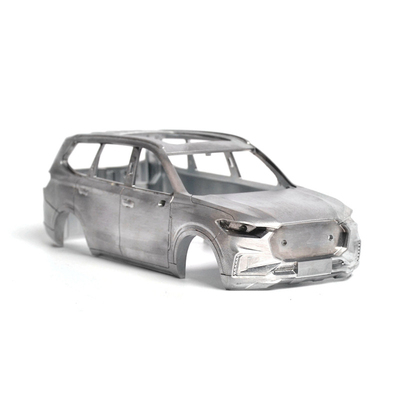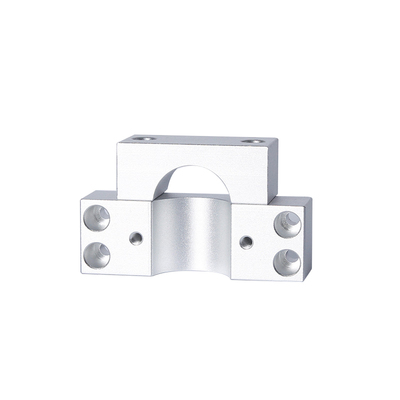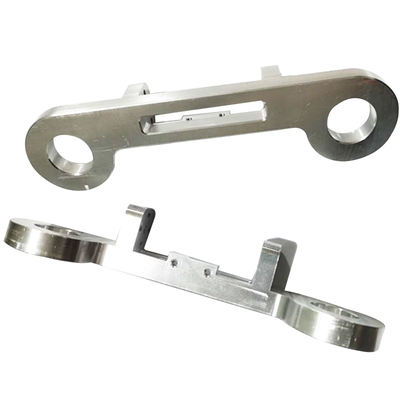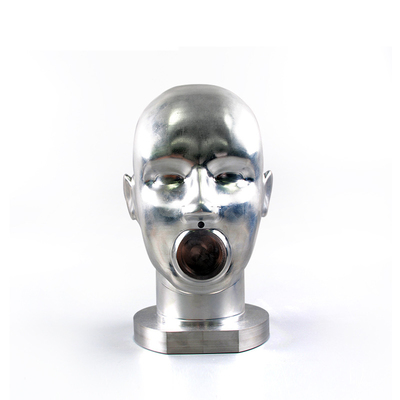3D printed glass advanced optics
On April 3, 2018, a research team at Lawrence Livermore National Laboratory (LLNL) in California has recently made an exciting breakthrough in the field of 3D printing optics. Scientists and engineers working on optical projects have developed a new 3D printing technology that uses special ink to be extruded from a custom 3D printer (similar to the FDM we know). They successfully printed small test pieces with advanced optical properties, comparable to many commercially available glass products, and have now applied for a patent for an innovative 3D printing process. You know, a good optical component now costs hundreds of thousands or even hundreds of thousands of yuan.

We have previously reported on LLNL’s 3D printing optical work. In the past few years, many 3D printing optical technologies have been tried, such as Fraunhofer IOF and Micron3DP, which usually use glass filament and advanced SLA technology. Researchers at LLNL pioneered the use of FDM fused deposition technology combined with custom 3D printing inks to improve glass manufacturing.
The difficulty of printing optical devices is that the refractive index of glass is sensitive to heat. In order to solve this problem, the researchers chose to store the special materials developed by LLNL in paste form, and then heat the entire printed product to shape it. This means that the glass can maintain a uniform refractive index, thereby eliminating any optical distortions that may cause degradation of optical functions.
The customized 3D printing ink is formed from a slurry of different silica and titanium dioxide particles. They made fine adjustments to print glass with specific thermal and mechanical properties as well as high optical properties.
“The components printed from molten glass usually show texture during the 3D printing process. Even if you plan to polish the surface, you can still see the traces of the printing process,” said Rebecca Dylla-Spears, a chemical engineer at LLNL, the main research of the project "This method allows us to obtain the uniformity required for optics, and now we can take these components and do some interesting things."
Initially the printed test piece was small, but now the technology has been proven, and many possible applications can be used for testing. It is possible to manufacture optical devices with geometric structure and composition changes, which cannot be achieved using more traditional manufacturing methods. For example, 3D printing technology can be used to make lenses with graded refractive index that can be polished, which will replace the more expensive polishing techniques used for traditional curved lenses.
LLNL researchers who participated in the study included Nikola Dudukovic, Michael Johnson, Du Nguyen, Timothy Yee, Garth Egan, April Sawvel, William Steele, Lana Wong, Paul Ehrmann, Theodore Baumann, Eric Duoss, and Tayyab Suratwala. Their work is described in detail in a paper entitled "'3D Printed Optical Quality Silica and Silica–Titania Glasses from Sol–Gel Feedstocks" and published in the "Advanced Materials Technologies" magazine.
Dylla-Spears said: “Additive manufacturing provides us with a new degree of freedom to combine optical materials in ways that we could not do before. Shape and optical properties. "
Glass printing case
As early as April 2017, German scientists made a breakthrough in glass 3D printing technology-by using a micro-sight curing (SLA) technology, they printed glass products with higher quality, complexity, and fineness. The castle in the picture above is one of the masterpieces. This means that the use of 3D printing technology to manufacture glass structures with higher optical performance (such as lenses or filters) is one step closer to popularization, because some companies (such as Israel's MICRON3DP) have achieved similar success.
It is understood that this breakthrough was achieved by Frederik Kotz and others from the Karlsruhe Institute of Technology in Germany. The secret lies in the use of a new nanocomposite material. This material is composed of "nano-level amorphous silica (quartz) powder" and a monomer that can be cured by ultraviolet light. The light transmission rate is as high as 66% at a wavelength of 365 nanometers. In contrast, the average cast nanocomposite material is only 4%.
The glass products 3D printed using this new material have high optical clarity and reflectivity, and the resolution is also high, which can reach tens of microns, so it is very suitable for making lenses or filters and other optical components. However, after the printing is completed, they still need to undergo high-temperature sintering and degreasing treatment at 1300°C before they can be truly formed.
When Luxexcel, a Dutch optical product 3D printing company established in 2009, successfully 3D printed the first usable lens, we believed that sooner or later the optical industry would be completely changed by this technology. The reason is simple-lenses and other optical products have a wide range of uses, and 3D printing can not only manufacture them at a faster speed than traditional processes, but also easily achieve customization. 3D printed lenses have been professionally tested and have reached ISO quality standards!
Link to this article: 3D printed glass advanced optics
Reprint Statement: If there are no special instructions, all articles on this site are original. Please indicate the source for reprinting:https://www.cncmachiningptj.com
 PTJ® is a customized manufacturer that provides a full range of copper bars, brass parts and copper parts. Common manufacturing processes include blanking, embossing, coppersmithing, wire edm services, etching, forming and bending, upsetting, hot forging and pressing, perforating and punching, thread rolling and knurling, shearing, multi spindle machining, extrusion and metal forging and stamping. Applications include bus bars, electrical conductors, coaxial cables, waveguides, transistor components, microwave tubes, blank mold tubes, and powder metallurgy extrusion tanks.
PTJ® is a customized manufacturer that provides a full range of copper bars, brass parts and copper parts. Common manufacturing processes include blanking, embossing, coppersmithing, wire edm services, etching, forming and bending, upsetting, hot forging and pressing, perforating and punching, thread rolling and knurling, shearing, multi spindle machining, extrusion and metal forging and stamping. Applications include bus bars, electrical conductors, coaxial cables, waveguides, transistor components, microwave tubes, blank mold tubes, and powder metallurgy extrusion tanks.
Tell us a little about your project’s budget and expected delivery time. We will strategize with you to provide the most cost-effective services to help you reach your target,You are welcome to contact us directly ( sales@pintejin.com ) .

- 5 Axis Machining
- Cnc Milling
- Cnc Turning
- Machining Industries
- Machining Process
- Surface Treatment
- Metal Machining
- Plastic Machining
- Powder Metallurgy Mold
- Die Casting
- Parts Gallery
- Auto Metal Parts
- Machinery Parts
- LED Heatsink
- Building Parts
- Mobile Parts
- Medical Parts
- Electronic Parts
- Tailored Machining
- Bicycle Parts
- Aluminum Machining
- Titanium Machining
- Stainless Steel Machining
- Copper Machining
- Brass Machining
- Super Alloy Machining
- Peek Machining
- UHMW Machining
- Unilate Machining
- PA6 Machining
- PPS Machining
- Teflon Machining
- Inconel Machining
- Tool Steel Machining
- More Material





